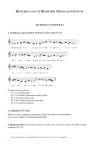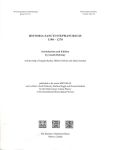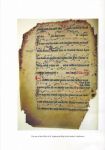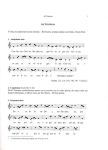|
A Zenetudományi Intézet vezetése az újabb átszervezéssel kapcsolatban teljes mértékben egyetért az MTA Zenetudományi Bizottság ez ügyben kiadott állásfoglalásával: A magyar zenetudományi kutatás intézményes kezdetei, Bartók Béla és Kodály Zoltán úttörő és nemzetközi jelentőségű népzene-rendszerezői tevékenysége révén, a Magyar Tudományos Akadémiához kötődnek. A Magyar Tudományos Akadémia alapította azt a két műhelyt – a Népzenekutató Csoportot és a Bartók Archívumot –, amelyből később az MTA Zenetudományi Intézete létrejött. A jelenleg a Bölcsészettudományi Kutatóközpont Zenetudományi Intézetében őrzött és gondozott, a nemzeti kulturális örökség részét képező nagy zenei gyűjtemények – a Bartók Archívum, a Népzenei és Néptánc Archívum, a 20–21. Századi Magyar Zenei Archívum és a Zenetörténeti Múzeum – a Magyar Tudományos Akadémia tulajdonában állnak, és ezeknek a kivételes értékű gyűjteményeknek méltó őrzőhelye a szintén MTA tulajdonú Erdődy-Hatvany palota. A Zenetudományi Intézetnek az Eötvös Loránd Tudományegyetemhez való csatolása minden ésszerű elgondolásnak ellentmond, és semmiféle történeti vagy praktikus érv nem szól mellette. Az MTA Zenetudományi Bizottsága üdvözli az MTA Elnöksége 2025. június 24-i állásfoglalását, amely szerint az MTA a megfelelő működési költségek és bérek biztosítása esetén kész átvenni a HUN-REN-ről leválasztott négy kutatóközpontot, a hazai nemzeti kutatások letéteményeseit: ezen intézmények, köztük a Zenetudományi Intézet finanszírozásának azonnali rendezése és hosszútávú biztosítása, a nyugodt munkakörülmények megteremtése nemcsak a magyar tudományosság, de a nemzet érdeke. A Zenetudományi Intézet gyűjteményeinek működtetését, kutatási eredményeinek a nemzeti kultúrába való szerves beépülését és kiemelkedő nemzetközi elismertségének fenntartását csak a Magyar Tudományos Akadémia biztosíthatja.
|
Historiae of saints
- This involves monographic treatment of the proprium de sanctis of individual Offices.
- Certain Office cycles may prove particularly interesting when large-scale reconstruction work on whole Office traditions, summaries of histories of sources and genres, or preparations are being made to publish certain sources. sanctis of individual Offices.
- Thin, condensed slices of the history of cantus planus may present and render conspicuous aspects which would remain hidden in a broader synthesis.
- Examination of the historiae of saints, which were seen initially as a research by-product, has developed into separate branch of the research.
- A fortunate conjunction took place in 1993 with the Historiae project in international plainchant research.
- So far three Hungarian volumes have appeared in the Historiae series of publications, two of them containing the Offices of Hungary’s two patron saints: St Stephen, King of Hungary, and St Demetrius of Thessaloniki.













